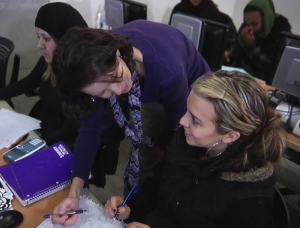We recently installed solar panels on our home. The benefits of adding them were immediate and obvious – the very first month they were on the roof our electric bill dropped to $9 (the fee required to stay connected to the grid) and we generated more power than we used, pushing the excess back out to the grid. Because I can’t stop thinking about open, I’ve been pondering the relationship between solar power and OER.
At the same time, I’ve been thinking about how to answer several questions I’m often asked. People who don’t work directly with Lumen sometimes have a hard time understanding what we do, and this leads to a range of confused questions like, “What does Lumen do, anyway?”, “How can you sell OER if they’re free?”, and “If OER are free, why would anyone pay you?”
As I’ve continued to think about these two topics, I realize they’re actually closely related. In fact, I believe the simplest way to answer to many questions about Lumen is by analogy. Let me explain…
Sunlight is perhaps the ultimate example of a public good. Both nonexcludable and nonrivalrous, sunlight is available to anyone and everyone for free. Sunlight is highly versatile and can do everything from making your garden grow to melting the snow off your driveway. For years now I’ve been hoping to use solar to power my home – to harness the sunlight so that it consistently and reliably does what I want (i.e., provides electricity to cool my house, run my lights, keep the wifi on, etc.). But in order to get the sunlight to do what I wanted it to, I needed to partner with someone else who had the right combination of expertise and technology.








